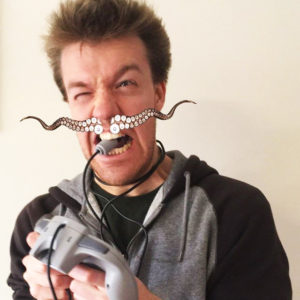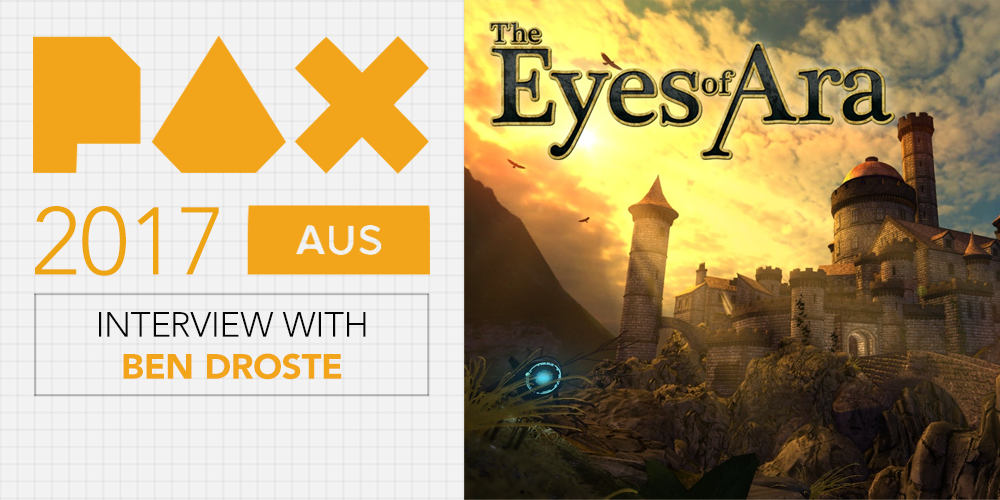
Nothing says mysteries and puzzles like an abandoned castle. Just ask Harry Potter; he found enough riddles in the long forgotten catacombs of Hogwarts to keep any gamer occupied for a week. Going and finding a castle to play around in is such a chore, though, so why not let the magic of video games bring the castle to you? The Eyes of Ara caught my attention with its appealing visuals, but after playing the game, I had to get into the mind of the man who crafted its mysteries.
What is The Eyes of Ara?
The Eyes of Ara is an adventure puzzle game. It’s set in this old and supposedly abandoned castle. You play a radio technician who has been contracted to go in and find the source of a mysterious radio broadcast emanating from somewhere in the castle. You go inside, it’s not as abandoned as you were led to believe and something very strange was going on in the past and is still going on in the present. You’ll make your way through the game solving puzzles, exploring rooms and trying to unravel the mystery of who used to live there and what’s going on.
We were talking earlier, and were saying that it’s not quite as, uh… Obtuse, shall we say, as Myst
[Laughs] Well, Myst is an old game now. It was the first big thing of it’s kind, and we’ve come a long way since then. EoA is the same genre, but I’ve tried to make it a more modern feeling game. There’s a lot of more modern game design techniques implemented to direct you, find clues, and guide you to help you through the game. My background is in environment art and level design, so I tend to use them to direct you through the game. Point you in the direction you need to be, what you need to be looking at and how to solve the puzzles.
How hard has it been to come up with puzzles that are interesting without copying something you’ve already seen?
You don’t want to copy anyone else for a few reasons. One, if it’s a copy, no one cares. People who are fans of these games will spot the copy. Two, if it is a copy, they already know how to solve it. It’s boring. There are a few homages in the game to other puzzles, but they’re always different. Coming up with good puzzles is the fun part, anyway! Sometimes the environment or design will lend itself to the puzzle and inspire the idea. Other times, I’ll come up with an idea and ask where I can fit this in or where it will suit. It’s different depending on the puzzle and the process.
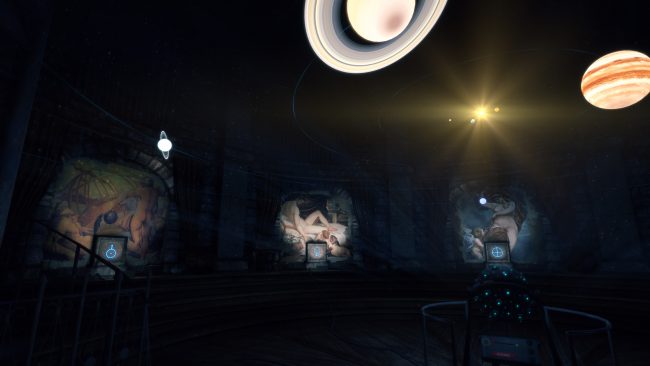
Is it a constant process of designing puzzles, or do you switch between designing levels and puzzles?
Again, depends on where the origin comes from. In some cases, I’ll need a puzzle for a room. I sit down, pull out a pen ‘n paper and start sketching out ideas, figuring out the mechanics of it, how it’s going to work. Other times you might have the room built and go, “Oh, I’ve got a really cool idea for how I can put something over here and make these things interact,” and it kind of designs itself. Other times I might have a puzzle in an early part of the game but put a new twist on it for later parts of the game. There are a few puzzles in the game that you do once, then later in the game you play a very similar archetype. So, you’ll have an idea of how to do it, but now it’s a new solution for a new problem that’s been introduced. It’s quite a lot of fun that way, because you have all this existing information coming in plus something new.
The aesthetic that you’re going for is very otherworldly and surreal. How important is it to you to nail the look and feel of a puzzle game like this.
Well my background is an environment artist. A huge part of the development for me was selling the world art. It’s partly why I built the game. I wanted to build a game about what I like building, which is levels and environments. Communicating the emotion and the design through the art itself was very important to me. The storytelling is told largely through the environments and through the feeling you get from it, so it is designed to feel very mysterious and otherworldly but also very inviting and beautiful.
One thing I really wanted to capture was that when I started work on the game, it was right at the peak of that desaturated, dark, gritty art where everything is grey and brown and awful. I said, “No, I’m going to put colour in my game, I’m going to saturate my environment. It’s going to be a bright bloody orange sky and bright blue lights, really saturated blue.” I wanted to capture the colour and use it… A lot!

The game is solely controlled through the mouse, so how do you frame a puzzle given that stationariness?
This actually worked out really well for me. I decided early on to have that stationary view port. That’s part of the homage to those earlier games which were just those framed shots, but it’s fully 3D, so you can still look around everywhere. It’s worked out really well from my perspective as an environment designer because I knew exactly where the camera would be positioned at all times, so I could frame everything exactly how I wanted. It works really well for puzzle design, because I can use the framing of the environment and what’s around to direct your attention where I want it to be.
That became one real driving pillar of the game, because I don’t want you to ever struggle to find the puzzle. There are hidden items that you’ll struggle to find, but the main secrets of puzzles, I want you to know where they are all the time, so I use the environment art to direct you there. Then the challenge is not in finding the puzzle but in solving it. I want you to solve the puzzle, not be lost going, “I’m lost, I have no idea,” I want it to be natural. That comes with the knowledge of knowing where the camera is going to go. I can position really subtle things like the direction that the planks on the walls go will help to draw your eye certain directions, lighting can shine on certain areas, that kind of thing.
Things you’d take for granted.
Exactly. These are very old and basic art techniques. It’s used a lot in painting and photography to lead your eyes to where the artist wants it to be. In my case, I lead your eye to the puzzles.
Would you say painting techniques are more relevant than architectural ideas?
It’s used a lot more heavily in my game than others, but you’ll find these techniques in all- well, all well-made 3D games, anyway. Because leading the player through the level is very, very important in general, not just stationary ones. I use them to lead you to the puzzles. Fully 3D games will use them to direct you to where you need to be. They’ll create paths through the levels so you know naturally where to go when you play. Same idea, mine’s just used for a different application.
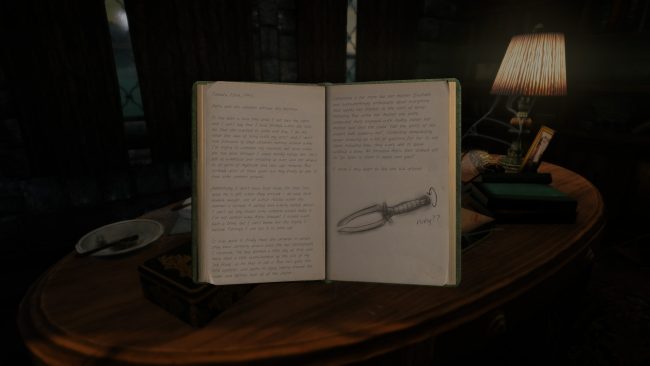
In terms of the puzzles, they’re very Myst-like. As the game goes on, they must become more obtuse over time to keep it interesting, so how do you design levels without giving away too much information?
At the start of the game, there’s a lot of clues, a lot of visual direction to lead you where you need to be. The later puzzles toward the end of the game hold back a lot of that. There’s still those clues there, but they’re not as obvious and you’ll need to figure out a lot of it yourself. A lot of it comes down to play-testing as well, getting a feel of if it’s too easy or hard and adding or subtracting as you go.
Is the game made in Unreal?
No, it’s Unity. People get surprised. I think it’s because it’s such a user-friendly engine, a lot of new developers come to it, use stock settings and it looks kinda drab. Unreal looks great out of the box, and Unity just takes a lot more work to make it look good. It’s still a very powerful engine, so I’m not trying to bag on one over the other. In my opinion, Unity is a lot more user-friendly, but the art tools are much more powerful. Unity, you can do the same quality, it just takes a lot more to get there, but it’s easier tot work with in other areas.
It’s interesting, a lot of the games around seem to be using Unreal a lot more.
Unreal has been playing catch up, really. A lot of the games in previous years started when Unreal was further behind. Unity showed everyone how to create an engine that’s usable by indie developers while providing a really user-friendly UI. It’s got the asset store, it’s got a great community, it’s got really friendly licensing deals… And Unreal has been playing catch-up with that for the last few years. Now Unreal is on par with that, so you’ll probably see a lot more Unreal games popping up. There’s obviously a lot of lead time there. The people that started when Unreal started catching up are only just now starting to show their games.
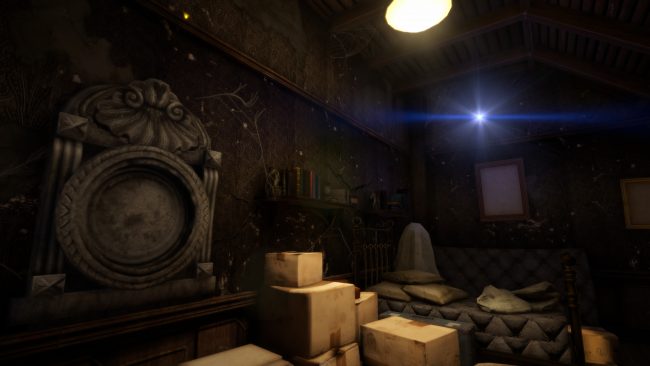
How long have you been working on the game for?
This was a 3-year development cycle. It launched last year. Well, okay, hang on. 3 years to get it out, and then another year since than has been supporting the game, providing updates, doing localisation. It’s now in 10 languages, that just launched last weekend. It’s out on Windows and Mac, but the next big task is porting it to mobile and tablet.
Here are some other places where you can show your support for The Eyes of Ara:
Website: http://www.100stonesinteractive.com/the-eyes-of-ara
Steam: http://store.steampowered.com/app/454250/The_Eyes_of_Ara/
Twitter: https://twitter.com/100Stonesgames
Facebook: https://www.facebook.com/100stonesinteractive

